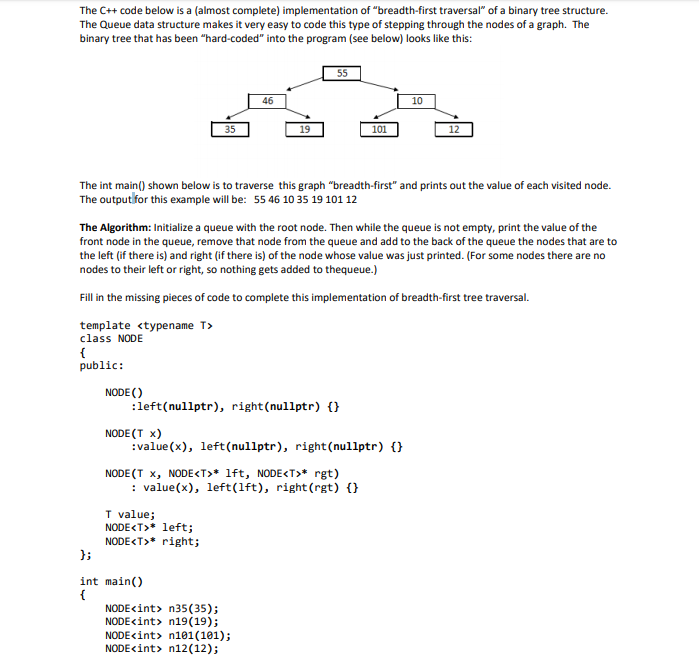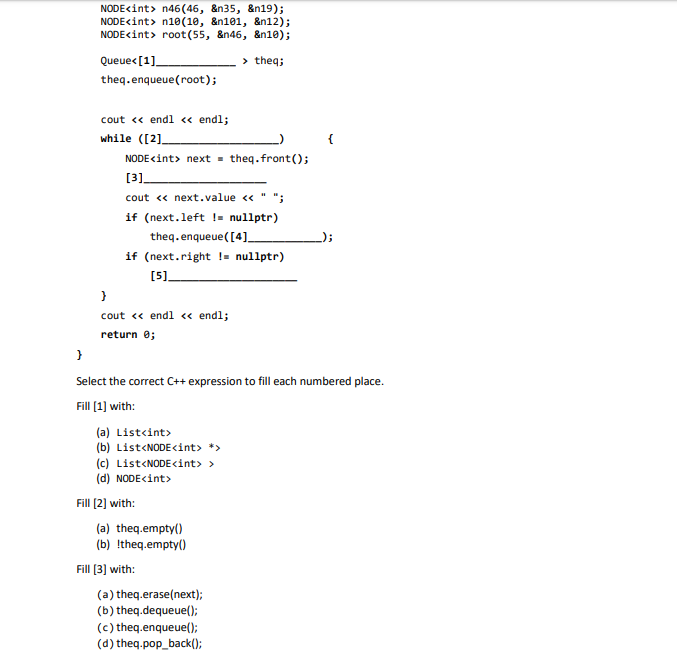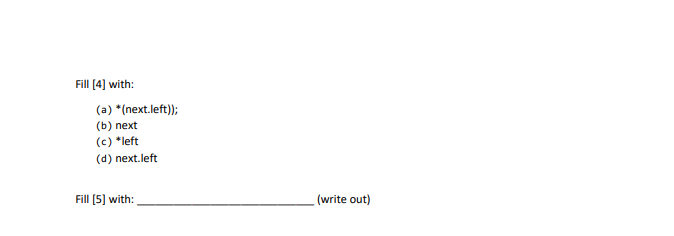Answered step by step
Verified Expert Solution
Question
1 Approved Answer
C++ Breadth-First Traversal The C++ code below is a (almost complete) implementation of breadth-first traversal of a binary tree structure. The Queue data structure makes


 C++ Breadth-First Traversal
C++ Breadth-First Traversal
Step by Step Solution
There are 3 Steps involved in it
Step: 1

Get Instant Access to Expert-Tailored Solutions
See step-by-step solutions with expert insights and AI powered tools for academic success
Step: 2

Step: 3

Ace Your Homework with AI
Get the answers you need in no time with our AI-driven, step-by-step assistance
Get Started


